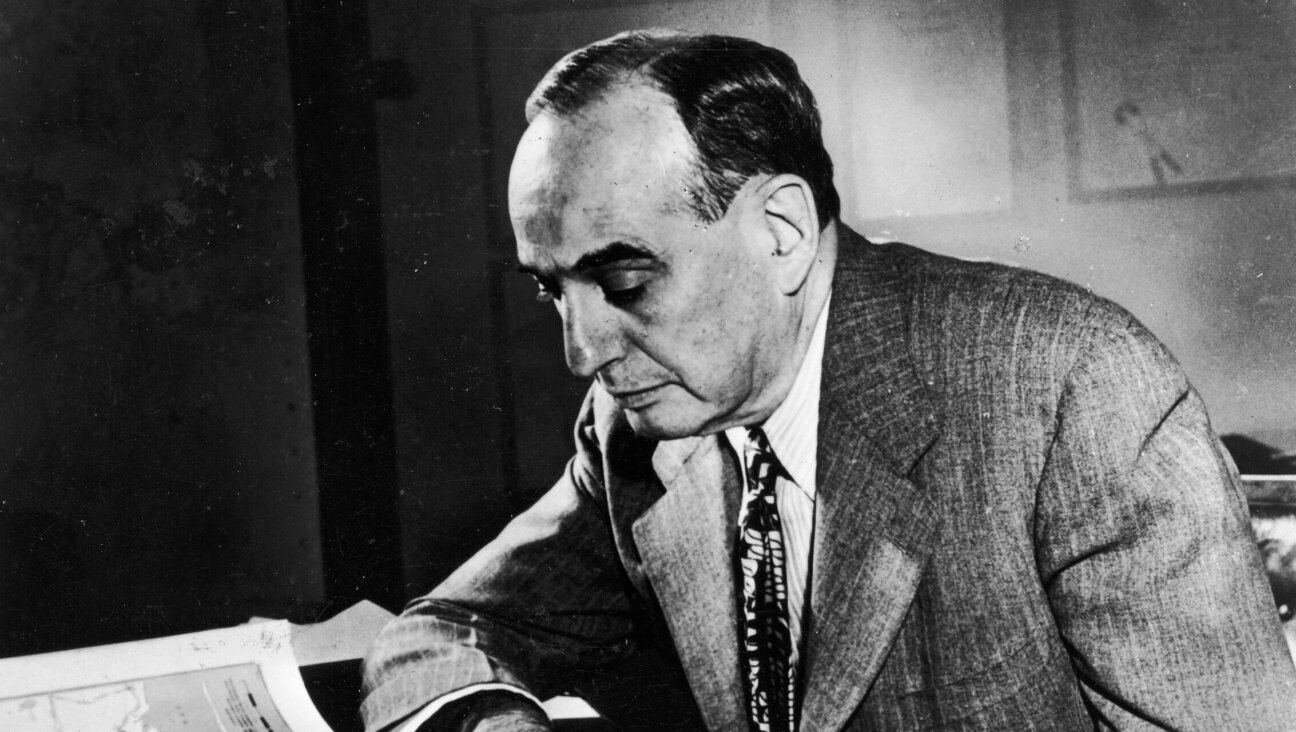Alejandro Jodorowsky’s Mad, Mad, Mad, Mad World

Image by Sony Pictures Classics
Where the Bird Sings Best
By Alejandro Jodorowsky, translated from the Spanish by Alfred MacAdam
Restless Books, 416 pages, $27.99
Albina and the Dog-Men
By Alejandro Jodorowsky, translated from the Spanish by Alfred MacAdam
Restless Books, 224 pages, $15.99
In Alejandro Jodorowsky’s recently translated autobiographical novel “Where the Bird Sings Best,” his maternal great-grandmother Sara Luz Arcavi tells her daughter about their family history. According to her story, their ancestors were Jewish lion tamers who were expelled from Spain in 1492. On their way into exile, they were entrusted with the secret of the tarot by the scholar and financier Isaac Abravanel, which was then handed down from generation to generation by the women of the family.
The little girl, Jashe, isn’t satisfied with this fanciful version of events. “She wanted to know about the real lives of her ancestors, not a fairy tale or a Bible story,” Jodorowsky writes. But Sara Luz tells her that the imagined version of history is the only one worth knowing:
“All the people in your family, my child, will, by the end of time, become champions, heroes, geniuses, and saints… Yes, my daughter, the past is not fixed and unalterable. With faith and will we can change it, not erasing its darkness but adding light to make it more and more beautiful, the way a diamond is cut.”
This is practically an artistic statement for Jodorowsky, a filmmaker and writer who uses the shards of history to create potent myths. Rather than employing symbols to shed light on the everyday, he transmogrifies the mundane into a fantastical and imagistic language.
Jodorowsky is best known as the filmmaker responsible for “El Topo” (1970), an acid Western that became the original midnight movie, and “The Holy Mountain” (1973), a surrealist classic about an alchemist who instructs a group of disciples using the symbols of astrology and the tarot. He returned to film in 2013 with “The Dance of Reality,” an autobiographical portrayal of growing up in Chile, and the same year appeared as the subject of “Jodorowsky’s Dune,” a documentary about his failed attempt to adapt Frank Herbert’s classic sci-fi novel. Jodorowsky’s most recent movie, “Endless Poetry,” premiered in May at the Cannes Film Festival.
Jodorowsky has been prolific over the decades in other media. With such artists as Moebius (Jean Giraud) and Georges Bess, he authored a whole library of comic books and graphic novels, and has written many of his own books, some of which are now starting to appear in translation. “Where the Bird Sings Best” was published in English in 2014, and will be released in paperback this July. His most recent work in English is “Albina and the Dog-Men,” a short novel that first appeared in Spanish in 2002.
In “The Dance of Reality,” Jodorowsky took an autobiographical turn, portraying his upbringing in the coastal mining town of Tocopilla. “Where the Bird Sings Best” takes a step back and relates his family’s history prior to his birth. Like the rest of Jodorowsky’s work, the story is filtered through the prism of his fertile imagination, which results in a novel that mixes real history with fantastical details. The book bears some resemblance to other works of Latin American magical realism, but in this case with a lot less realism.
Just like the author’s great-grandmother, who tells an inventive version of history to her daughter, Jodorowsky populates his family tree with lion tamers and ballet dancers, kabbalists and anarchists, and a rabbi dybbuk who inhabits several generations of Jodorowsky men. Although “Where the Bird Sings Best” is a wide-ranging chronicle, like “The Dance of Reality,” it eventually focuses on Jodorowsky’s father, Jaime, who becomes the book’s final and most important protagonist.
In “The Dance of Reality” Jodorowsky cast his father as a tyrannical disciplinarian who struggled with his own inner demons. That portrait is expanded here, with Jaime playing roles as an amateur boxer, a wandering circus performer and a devoted follower of the Chilean leftist leader Luis Emilio Recabarren, in whom he finds a surrogate father figure.
Throughout it all, Jaime tries to alleviate feelings of alienation and an unshakeable conviction that he has neither country nor people of his own. “All the Chileans he fought had roots, grandfathers, homeland,” Jodorowsky writes. Jaime, in contrast, came from “martyred emigrants from the Kingdom of Never Ever, with their souls enclosed in a diver’s suit into which no air was ever pumped, islands without bridges, relating to one another by smacks, like billiard balls.”
Jodorowsky locates his own homeland in more ethereal realms. According to this telling, his spirit was reincarnated countless times throughout history, including as the tarot-bearing Isaac Abravanel, before deciding to re-enter the world by forcing an encounter between his father and mother. “Separated by more than two thousand miles, they never would have found each other if I hadn’t decided in 1919 to take those two people so different in character…to be the founding elements of my future body.” Does Jodorowsky really believe this? Maybe, but that’s irrelevant. What matters is the myth.
If “The Dance of Reality” uses history in the service of a bigger story, “Albina and the Dog-Men” nearly dispenses with history altogether. At the outset, however, the novel seems as though it might cover some of the same ground. The main character, Crabby, is the daughter of Jewish immigrants from Lithuania. Her real name is Isaac, because her parents wanted a boy. But aside from these few details, any connection to Jodorowsky’s own family background is soon left behind.
After getting fired from her job as a maid at the Spanish Club in Iquique, Crabby opens a gold-exchange shop where she provides refuge to a giant albino woman who shows up one day suffering from amnesia and being pursued by mysterious monks. Albina transforms the gold shop into a nightclub where she dances in the nude, but the two women are soon forced to flee from a corrupt, club-footed policeman.
After encountering a helpful midget and haberdasher named Amado, they land in an isolated town named Camiña, where they meet a population of immortal beekeepers and discover that when the moon is full, Albina involuntarily turns men into slavering dogs, a condition that can be cured only by a cactus flower that blooms only once every hundred years. On their quest to find the cactus, they cross paths with a witch doctor and her pet armadillo, a mining company backed by the Chilean military, a long-lost Incan tribe hidden in a mountain-enclosed jungle, an extraterrestrial goddess named Mama-Oello and a gang of drug dealers who ride through the desert on giant hares.
This is a strange story, and it’s tempting to try and decode the precise meaning of each character and symbol. Yet, as with most of Jodorowsky’s work, this isn’t a fruitful exercise. Like the 20th-century surrealists, Jodorowsky aims to create works whose meaning defies rational explanation. And rather than just express ideas and experiences that normally elude the conscious mind, his works break down reality in order to construct new myths from it.
Unfortunately, Jodorowsky is less successful at this in his books than he is in his films. In his visual works, he displays a true genius for image making, and the eccentric tableaux that populate his oeuvre have the intuitive, unsettling power of successful surrealistic works. His stories, in contrast, fall into conventional quest-like sequences, which provide convenient scaffolding for other artistic elements, but are a little tedious on their own. So too, his characters are rarely more than two-dimensional outlines, projections of ideas rather than fully realized human beings.
The good news is that Jodorowsky’s career as a filmmaker is back on track. His latest movie, “Endless Poetry,” is just the second in a planned five-movie autobiographical sequence. Personally, I wouldn’t mind seeing him adapt “Albina and the Dog-Men” as well. It isn’t likely to be a blockbuster, but watching flocks of salamander-like parrots or herds of giant desert-dwelling rabbits would be a lot more exciting than reading about them. Even as a book, though, this short novel is amusing and strange. Like all myths, it has a power all its own.
Ezra Glinter is the Forward’s critic-at-large. Contact him at [email protected] or on Twitter, @EzraG






















